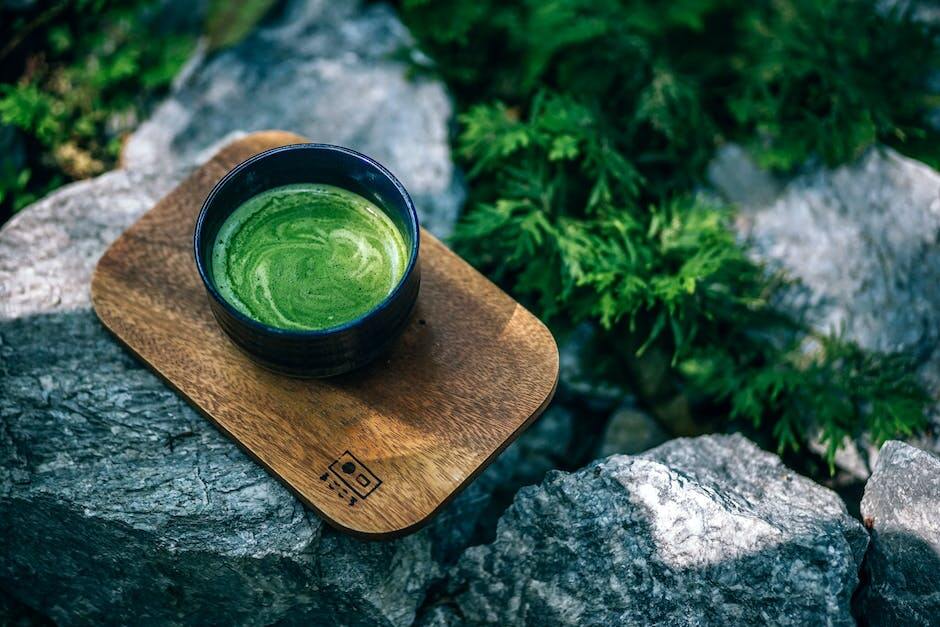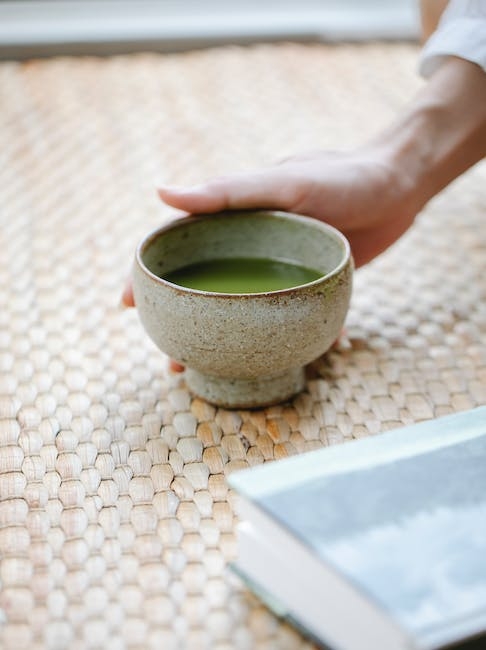Matcha: A Brief History of Japan’s Famous Green Tea
Matcha, a finely ground green tea, is a beloved beverage and a staple in Japanese culture. It has a long and fascinating history that dates back to China’s Tang Dynasty and has been an important part of Japan’s cultural identity for centuries. In this blog post, we’ll delve into the origins of matcha tea, how it evolved in Japan, and why it remains so popular today.
The Origins of Matcha Tea
Matcha tea, also known as “ground tea” or “powdered tea,” originated in China during the Tang Dynasty (618-907 AD). The tea leaves were steamed, dried, and ground into a fine powder, which was then whisked into hot water. This method of preparation was popularized by Chinese Buddhist monks, who valued the tea’s calming and meditative properties.
In the early 12th century, Japanese Zen monks brought back tea seeds and tea plants from China. The Japanese monk Eisai (1141-1215) is credited with introducing matcha to Japan. He wrote a book called “Kissa Yojoki” (Book of Tea), which described the health benefits of tea and how to prepare it. Eisai believed that matcha had a variety of health benefits, including boosting metabolism and improving cognitive function.
Matcha in Japanese Culture
Matcha was initially consumed by the Japanese aristocracy and samurai class, who valued its health benefits and rich, complex flavor. However, it eventually became popular among the general population during the Edo period (1603-1868). During this time, the Japanese tea ceremony (chanoyu) emerged as a cultural practice centered around matcha tea.
The tea ceremony emphasized simplicity, harmony, and respect, and it became a way to showcase Japanese aesthetics and hospitality. The practice of the tea ceremony spread throughout Japan and became a key part of Japanese culture. Matcha also became associated with traditional Japanese arts, such as calligraphy, flower arrangement, and pottery.
Matcha Today
Today, matcha is still an important part of Japanese culture and is enjoyed in a variety of settings, from casual cafes to formal tea ceremonies. It has also gained popularity in the western world, where it is often used in baking, smoothies, and other culinary applications.
Matcha is known for its high concentration of antioxidants and other health benefits. It contains caffeine and L-Theanine, an amino acid that promotes relaxation and reduces stress. It is also rich in vitamins and minerals, including vitamin C, potassium, and magnesium.
Conclusion
Matcha tea has a rich and fascinating history that spans centuries and has become an important part of Japanese culture. From its origins in China to its evolution in Japan, matcha has played a central role in the lives of countless people. Today, it remains a beloved beverage and a symbol of Japanese hospitality, simplicity, and respect.
Sources:
Discover the Amazing Health Benefits of Matcha Tea
Matcha tea is a popular beverage that has been consumed for centuries in Japan and is now gaining popularity worldwide. Made from ground green tea leaves, matcha tea is a concentrated source of nutrients and antioxidants that provide numerous health benefits.
The Nutritional Value of Matcha Tea
One cup of matcha tea is equivalent to 10 cups of regular green tea in terms of nutritional value. This is because the entire tea leaf is consumed, rather than just the brewed water. Matcha tea contains a high amount of catechins, which are antioxidants that help protect against cell damage and lower the risk of chronic diseases such as cancer and heart disease.
Stress-Reducing Properties
Matcha tea also contains L-theanine, an amino acid that promotes relaxation and reduces stress and anxiety. The combination of L-theanine and caffeine in matcha tea provides a calm and focused energy boost without the jitters or crash that is often associated with coffee.
Weight Loss and Metabolism Boosting Properties
Matcha tea can boost metabolism and aid in weight loss by increasing the body’s ability to burn calories and fat. The high concentration of catechins in matcha tea also helps to reduce the absorption of dietary fat and cholesterol.
Brain Function and Memory Enhancing Properties
Matcha tea can improve brain function and enhance memory and concentration due to its combination of caffeine and L-theanine. The amino acid L-theanine promotes alpha waves in the brain, which can induce relaxation and improve focus.
Promotes Healthy Skin
Matcha tea can also promote healthy skin by reducing inflammation and protecting against UV damage. The high concentration of antioxidants in matcha tea helps to neutralize free radicals, which can cause damage to skin cells and lead to premature aging.

In Conclusion
Matcha tea is not just a tasty beverage, it is also a powerhouse of health benefits. From reducing stress and anxiety to promoting weight loss and healthy skin, matcha tea is a versatile drink that can be enjoyed at any time of the day. So why not swap your morning coffee for a cup of matcha tea and reap the rewards of this amazing beverage?
How to Make the Perfect Cup of Matcha Tea
Matcha tea is a traditional Japanese tea that has become increasingly popular in recent years due to its numerous health benefits and delicious taste. However, making the perfect cup of matcha tea can be a bit tricky. Follow these simple steps to make a cup of matcha tea that is both delicious and nutritious.
Step 1: Start with High-Quality Matcha Powder
The first step to making the perfect cup of matcha tea is to start with high-quality matcha powder. Look for organic, ceremonial grade matcha powder that is fresh and vibrant green in color. The quality of the matcha powder will have a significant impact on the taste and texture of your tea.
Step 2: Gather the Necessary Equipment
You will need a few pieces of equipment to make matcha tea, including:
- Bamboo whisk (chasen)
- Small tea bowl (chawan)
- Bamboo scoop (chashaku)
- Fine-mesh sieve (furui)
Make sure you have all of these items on hand before you begin.
Step 3: Heat the Water
The next step is to heat filtered water in a kettle until it reaches a temperature of around 175F to 180F. Do not let the water boil, as this will affect the taste of the matcha.
Step 4: Sift the Matcha Powder
Use a fine-mesh sieve to sift the matcha powder into the tea bowl. This will help to remove any clumps and ensure a smooth, creamy texture.
Step 5: Measure the Matcha Powder
Use the bamboo scoop to measure out about one teaspoon of matcha powder and add it to the tea bowl.
Step 6: Add Hot Water
Slowly pour the hot water into the tea bowl, whisking vigorously in a back-and-forth motion with the bamboo whisk until the mixture becomes frothy.
Step 7: Enjoy Your Matcha Tea
Once the matcha tea is frothy and well-mixed, you can enjoy your cup of matcha tea. Sip it slowly and savor the rich, creamy flavor and the many health benefits it has to offer.
Making the perfect cup of matcha tea takes a little practice, but with these simple steps, you’ll be a matcha tea pro in no time!
The World of Matcha Tea: Grades, Varieties, and What to Look For
Matcha tea has been a beloved staple in Japanese culture for centuries, and it’s not hard to see why. This vibrant green tea is not only delicious but also packed with health benefits. But with so many different grades and varieties, how do you know which matcha tea is right for you? Let’s explore the world of matcha tea and discover what makes each grade and variety unique.
Grades of Matcha Tea
Matcha tea is graded based on the quality and processing of the tea leaves. Here are the three main grades you’ll encounter:
| Grade | Quality | Flavor |
|---|---|---|
| Ceremonial Grade | Youngest, most tender leaves | Rich, umami flavor |
| Premium Grade | Slightly older leaves | Slightly bitter or astringent taste |
| Culinary Grade | Older leaves | Muted flavor, often used for cooking |
As you can see, the grade of matcha tea you choose will greatly impact the taste and quality of your tea. If you’re looking for the best of the best, go for ceremonial grade matcha made from the youngest, most tender leaves that are hand-picked and processed with care.
Varieties of Matcha Tea
Within each grade, there may be different varieties of matcha tea made from specific tea leaves. Here are a few examples:
- Gyokuro Matcha – made from gyokuro tea leaves, this matcha has a rich, sweet flavor with a slightly bitter finish.
- Tencha Matcha – made from tencha tea leaves, this matcha has a milder flavor with a slightly sweet finish.
- Blend Matcha – a blend of different tea leaves, this matcha has a balanced flavor with notes of sweetness and bitterness.
Each variety of matcha tea will have a slightly different flavor profile and level of bitterness, so it’s worth trying a few to find your favorite.
What to Look For in Matcha Tea
When choosing a high-quality matcha tea, there are a few key things to look for:
- Bright green color – this indicates that the tea leaves were shade-grown and processed correctly.
- Sweet and vegetal aroma – this indicates fresh and high-quality tea leaves.
- Smooth and creamy texture – this indicates that the tea has been ground finely and is of good quality.
By paying attention to these factors, you can ensure that you’re getting the best matcha tea for your money.
Conclusion
Matcha tea is a delicious and healthy beverage that’s worth exploring. By understanding the different grades and varieties of matcha tea, you can find the perfect tea for your taste buds. Remember to look for a bright green color, sweet aroma, and smooth texture when choosing a high-quality matcha tea. Happy sipping!


Leave a Reply